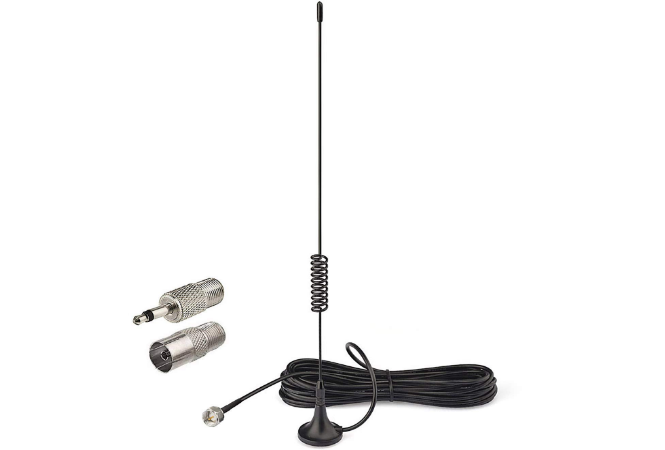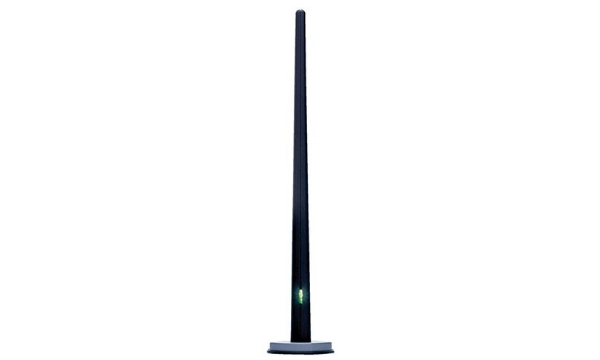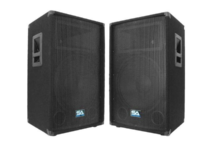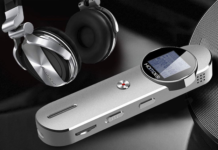Nothing is as frustrating as a scrambled signal on your radio especially when your favorite song is on. Frequency Modulation (FM) is often prone to a poor signal which can result in lousy or no reception at all. However, FM antennas are designed to help improve the transmission of sound waves so that you can listen to your device loud and clear with no interruptions.
Antennas or commonly referred to as aerials come in all manner of shapes and sizes such as rods, long wires or even dishes. FM antennas are of two types: transmitter and receiver antennas. A transmitter antenna generates an electric signal and turns them into radio waves while receivers which are the most common accept the radio signal and convert it into a clear signal.
There are various factors that you need to consider before settling on a particular FM antenna. Ability to filter out noise and distortion is important for an aerial. To help you with your decision, we have reviewed some of the best FM antennas available in the market today that will provide you with clear and quality sound.
Top 7 FM Antennas Of 2020 Reviewed
1. Ancable Indoor FM Antenna
 Best For Multiple Stereo Receivers
Best For Multiple Stereo Receivers
To get a more stable FM signal, then this 75 Ohm antenna from Ancable is a great solution. It’s a female type push into a male connector that is easy to install for excellent sound quality. The cable length is 1.5 meters and is made with a specification for a 22AWG UL certificate wire.
It connects directly to your receiver but may need an adapter to do so. This antenna doesn’t pick up any noise so that you enjoy quality sound. It’s designed to work well with receivers from Yamaha, Pyle, JC, Sherwood, Panasonic and even table top stereos.
Pros:
- Easy to install
- Shuts out all the noise
- Works with a wide range of receivers
Cons:
- Not compatible with some stereos
- Needs an adapter to work
- May not lock into autotune
2. Bingfu Magnetic Base FM Antenna
 Best Indoor Digital HD Radio FM Antenna
Best Indoor Digital HD Radio FM Antenna
Looking for a way to improve the stereo reception for your AM or FM receiver? You might want to start by investing in the Bingfu Magnetic Base FM Antenna. It is compatible with the speaker selector music system and Bluetooth power amplifier system. If you like, you may also use it on your home theater system. This is the best indoor digital HD radio FM Antenna, given that it can be used on a variety of FM receivers including Sherwood, Marantz, Yamaha, Onkyo, Pioneer, and Denon.
What it does is to turn a normal FM signal into a fully HD sound. It comes with a magnetic mount at the base, an antenna cable, coaxial cable (3 meters), a cable connector, an F-type male plug-in connector, and an adapter. Also, you will find a TV female socket connector as well as a 3.5mm audio plug connector. After you have assembled all of these items, you will be guaranteed of a near-perfect FM reception in your home.
Pros:
- Turns FM signal into HD sound
- Works with multiple stereo receivers
- Has a magnetic base mount
Cons:
- Reports of reception never improving
- May not function in foggy weather
- Some found it difficult to assemble
3. Amplified Indoor AM/FM Antenna
 Best AM/FM Antenna
Best AM/FM Antenna
Designed as both an AM and FM antenna, this product comes with an in-built low noise amplifier which will boost the FM signal give you a clear, crisp sound. It also delivers a balanced AM/FM reception for a balanced reception range. The antenna has a 50-mile range for a strong signal and also comes with a multidirectional reception pattern which ensures that you receive more channel reception and eliminates many blind spots.
It also has a compact size which allows you to conveniently place it almost in any location in your home. The aerial is compatible with FM female connectors and AM spring type connectors. The antenna is easy to set up since it allows both vertical and horizontal position for reception.
Pros:
- Multipurpose
- Easy to set up
- Compact size
Cons:
- Doesn’t work outdoors
- Doesn’t come with a manual
- Not CM rated
4. Fancasee FM Antenna
 Best F-Type Design
Best F-Type Design
At 75 Ohms, this antenna is built to deliver strong signals for stereo receiver radios. It has a 4.9 feet length coaxial cable which is designed to allow you to receive more FM stations for an enhanced listening experience. Being plug-and-play compliant, the F-type design allows for a push on a female connector plug which makes it easy to install and use for indoor signal reception. Before you purchase this antenna, you have to ensure that it’s compatible with your stereo since it doesn’t support some receivers.
Pros:
- Easy to set up
- Long coaxial cable
- Shuts out noise
Cons:
- Doesn’t work on some stereos
- Could be a bit big
- Requires modification
5. E-outstanding 75 Ohm UNBAL FM Radio Antenna
 Best HD Antenna
Best HD Antenna
This 75 Ohm F type connector is designed to enhance your FM stereo reception so that you can enjoy good quality sound. The UNBAL Dipole Indoor T Antenna HD Aerial will ensure superb reception with minimal noise. It’s designed to work with Yamaha, JVC, Sony and BOSE radios. The cable length is 6 feet (1.8 meters) while the dipole length is about 31 inches. It has a T Pole for improved FM reception.
Pros:
- Good signal reception
- Works with a variety of stereos
- Minimal noise
Cons:
- May come with a short cable
- Mismatch in the Ohms of the connector and antenna
- The design is old school
6. Bose Wave FM Antenna
Bose is a recognized brand around the world and is reputable for giving its client quality items. One such product is this antenna that is designed to improve the performance of your radio where reception is poor. The plug is 3 mm which easily inputs to the back of your stereo system without the use of screws. The antenna measures 9 feet long and comes with two feet Y extensions. It’s compatible with the Wave music system, Acoustic wave system and Wave radio II.
Pros:
- Superior quality construction
- Long cable
- Easy input
Cons:
- Poor reception
- Only compatible with Bose stereos
- Complaints of poor quality
7. TERK Amplified AM/FM Stereo Indoor Antenna
Rightly names the TOWER, this indoor antenna stands tall as a sign of its superior performance and value. The design is classy yet simple but elegantly made using high-quality materials that are built to last for a long time. It has patented Air Coil technology which distinctly isolates AM and FM elements which helps improve radio reception and minimize noise interference. The Extremely Low Noise (ELN) feature helps the amplifier gain maximum boost.
The FM frequency range is 88-108MHz while the AM range is 540 -1700 MHz. This indoor aerial also features a patented 360-degree omnidirectional reception which allows it good coverage without the need for constant adjustments. Its compatible with digital HD radio stations and its compact design allows it to sit comfortably on a shelf. The package includes a 6 foot 75 Ohm coax cable and an AC/DC power adapter.
Pros:
- Minimal noise interference
- Omnidirectional reception
- Powerful boost for weak signals
Cons:
- Some have an issue with the lighted dial
- Wire cable is short
- Not the best for music
How to Choose the Best FM Antennas: The Ultimate Buying Guide
Without an antenna, chances are that your signal will be scrambled especially if you live in an area that’s densely populated and has a lot of high rise obstructions. You will find that a small radio with a mono FM will sound super even when the signal is minimal since the speaker will get rid of any noise or distortion. However, such small stereos don’t have the amplified sound effect that comes with big radios which is why you have to get an antenna for better signal reception.
What Is FM?
The initials FM stand for Frequency Modulation which is one of the best discoveries made in the world of electronics. When a sound is made, the carrier frequency is regulated by a signal which widens the band rather than narrows it. The wider the signal the less the interference by noise which is common in AM (Amplified Moderation).
FM channels occupy 88 to 108 MHz and are broadcasted in either monophonic or stereophonic. The monophonic broadcast is where the sound was transmitted through only one channel and was the only broadcast available until 1961. However, with the discovery of stereophonic broadcasting, the popularity of FM has grown remarkably.
What Determines Signal Reception?
There are several things that will determine the amount and quality of the signal that you receive. They include:
- Signals being broadcast around that area – When two signals use the same direct path, there may be audio distortion and this may be identified by the flashing of red on your stereo.
- Broadcast tower location – the broadcasting equipment needs to be placed on the elevated ground such as a mountain or hill.
- The strength of the signal – Your radio will sound better when the strength of the signal is strong. Even with an antenna, if the signal is weak you will not get good reception.
- Electronic interference – Electromagnetic fields are known to cause poor reception especially from electrical appliances around your home.
- Terrain – When living in an area that has rough environmental terrain, you will encounter a poor signal reception due to interference.
Choosing an FM Antenna
There are a number of factors that you need to keep in mind before you buy an antenna. First, you have to decide the type of antenna that will meet your needs depending on your location. For best results, ensure that you are in a location where you have access to a direct signal with the minimal amount of reflected signal.
For densely populated areas, you need to go for an antenna designed for sharp directivity rather than a high gain antenna. The best antenna is one which effortlessly rejects unwanted signals that bounce off from obstructions. An antenna with a narrow beam width is able to reject unwanted signals.
Types of Antennas
In your pursuit for the perfect reception for your radio, you will encounter three main types of antennas namely;
- VHF/FM Antennas – These are broadband FM antennas which implies that there’s more than one band of frequency which may compromise on frequency modulation but will be just fine for local radio reception.
- Built-in FM antenna – You will find that your radio comes with its antenna built into it which will be okay when the signal strength is great and there are minimal if any obstructions. Such antennas often reject multipath sound signals or signals sent from a remote signal transmitter.
- Rotator – If you want to receive signals from as many directions as possible, then you have to install a rotator. With a rotor and a high gain antenna, then you will be in a position to pull in almost 100% of the signals within a range of 200 miles.
Conclusion
There’s no reason not to enjoy entertainment on your stereo with the right kind of antenna. It’s true that signal transmission is often interfered with by objects beyond your control but with a good antenna, you will be just fine. We hope that this review has shed some light on the best FM antennas for your needs and you will soon be enjoying crisp clear sound on your stereo.




















![Best Crochet Hooks for Beginners and Pros [2020 Update] best crochet books](https://www.awebtoknow.com/wp-content/uploads/2018/01/best-crochet-books-100x70.jpg)


